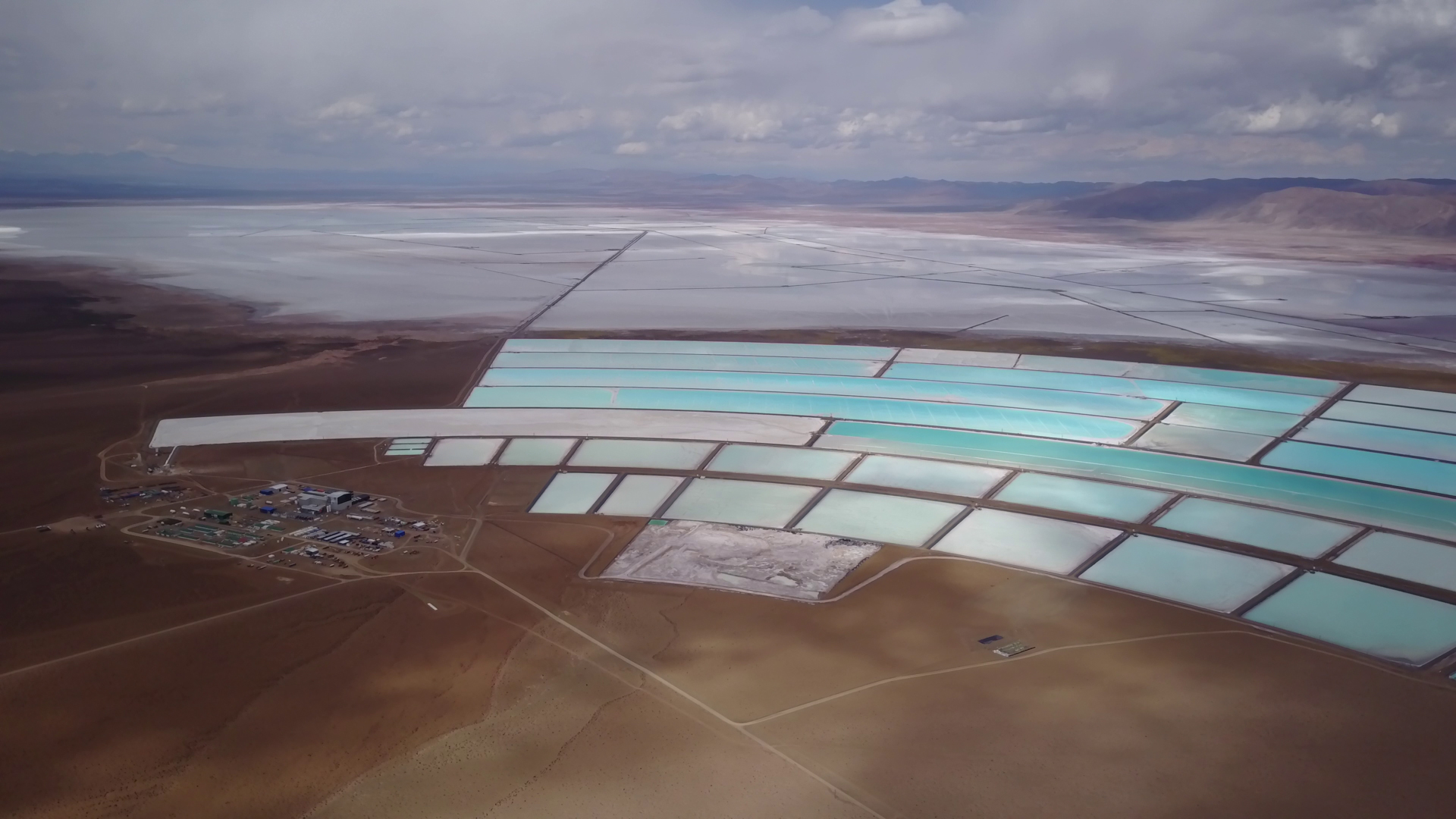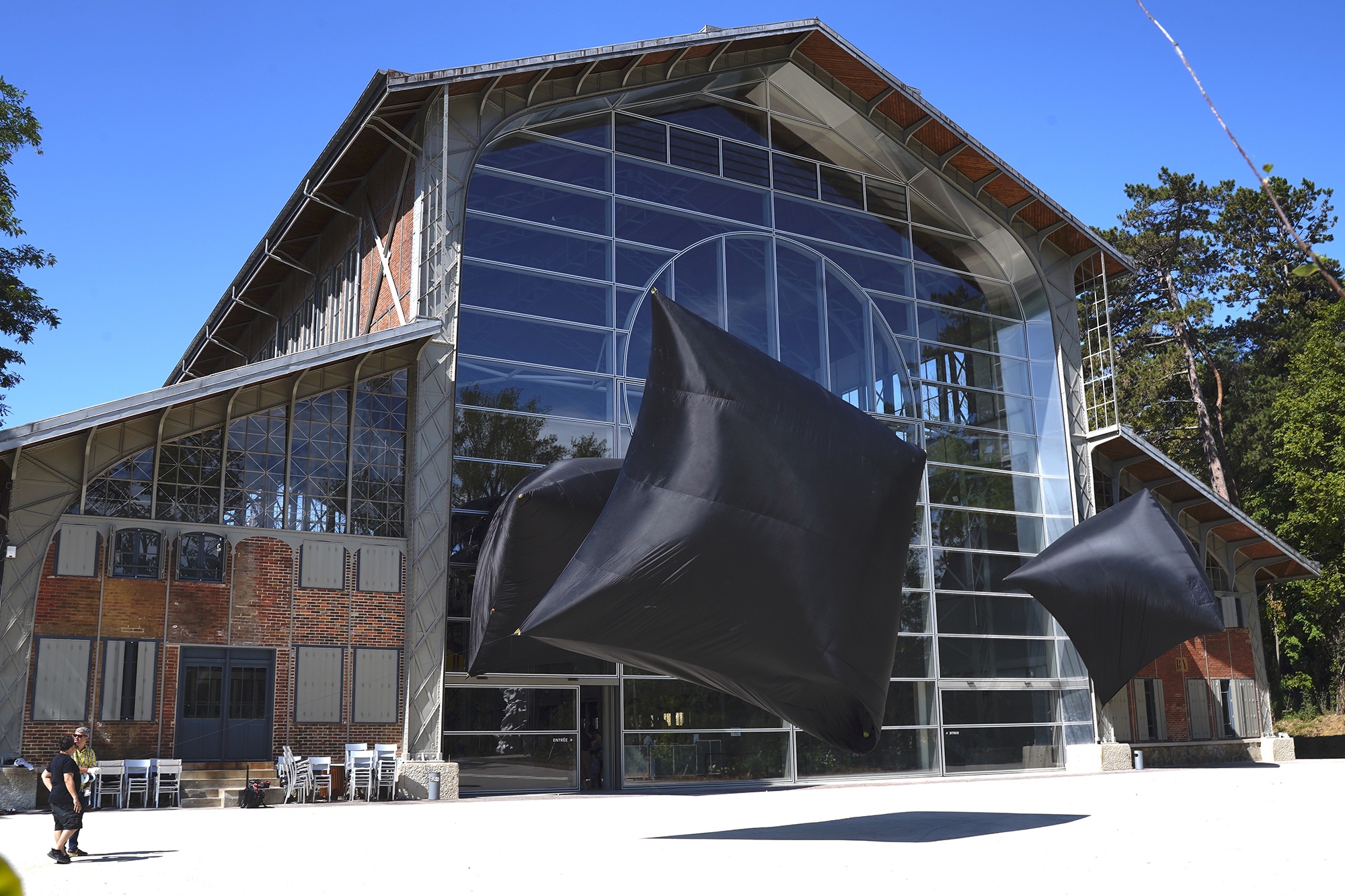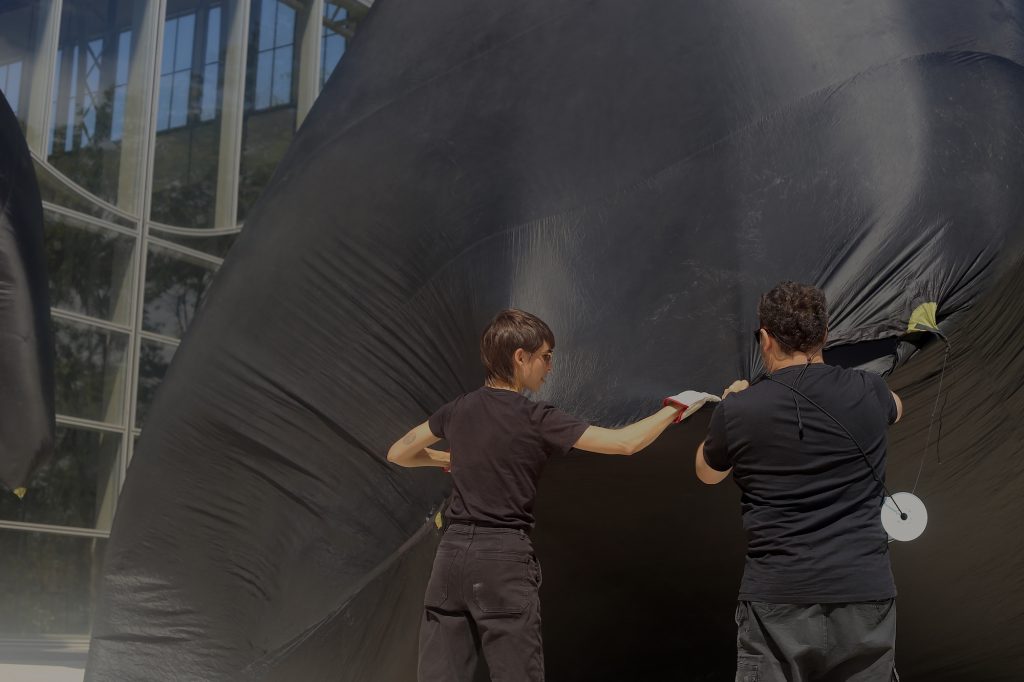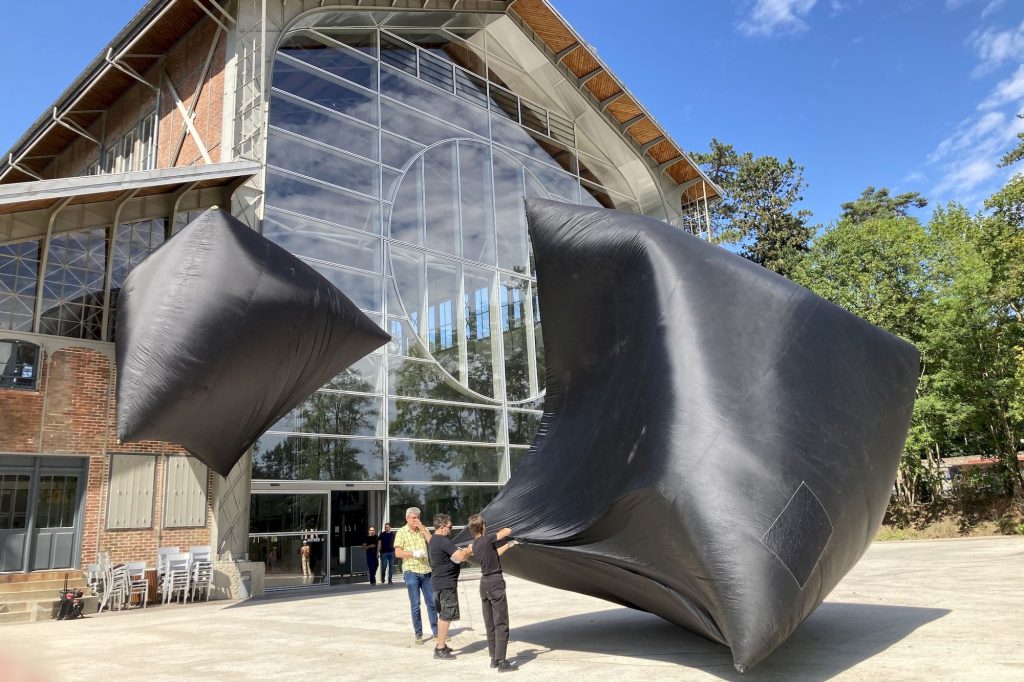Comunidades Indígenas de Salinas Grandes y Laguna de Guayatayoc
“Para las Comunidades de la Cuenca de Salinas Grandes y Laguna de Guayatayoc, el Buen Vivir es el proceso de la vida comunitaria en plenitud en nuestro territorio. Es ser uno mismo con la comunidad desde sus propias raíces. Alcanzar el Buen Vivir, implica saber vivir y luego saber convivir”.
El presente documento contiene el trabajo en los territorios de las comunidades de la Cuenca de Salinas Grandes y Laguna de Guayatayoc, que organizadas construimos así, un sendero de lucha y de acción política con nuestra vida, en un escenario de disputa con los modelos y las políticas funcionales al despojo, en un horizonte por el Buen Vivir “Sumak Kawsay”, en el que nuestras acciones son propuestas como herramientas, estrategias, producción y revalorización de saberes y conocimientos ancestrales. Son alternativas político-organizativas que tienen su grandeza en la realización comunitaria y su potencia en la perseverancia. Distinto a la realidad que se nos presenta en modelos y planes de desarrollo que no dialogan con lo que somos, que no dan cuenta de nuestra historia comunitaria, nuestras necesidades y potencialidades, y en los que nuestra voz no ha sido escuchada.
Ante esta realidad común, desde nuestros encuentros, asambleas, reuniones, talleres por comunidad, desde los debates, reflexiones y luchas políticas de acuerdo a nuestra construcción organizativa ha surgido la propuesta de elaborar un Procedimiento de Consulta y Consentimiento Previo, Libre e Informado para nuestras Comunidades Indígenas de las Salinas Grandes y Laguna de Guayatayoc, de conformidad con el marco jurídico vigente en Argentina, en especial el artículo 75 inciso 17 de la Constitución Nacional, el Convenio 169 de la OIT – Ley Nacional N° 24071 y la Declaración de los Derechos de los Pueblos Indígenas de la ONU. Con este documento queremos presentar el camino que recorrimos para hacer frente a los conflictos territoriales que vivimos en nuestra región; propuestas que se encaminan en un sentido diferente de nuestra cosmovisión andina, atentando contra el equilibrio de la Pachamama. Creemos en la participación y la consulta como mecanismos para la creación de políticas integrales y comunitarias. (…)
¿Por qué lo denominamos Kachi Yupi?
Mucho hemos conversado, debatido y consensuado hasta obtener este documento que consideramos un instrumento comunitario para la defensa de nuestros derechos, de nuestras familias, de nuestra cultura, de nuestra identidad y de nuestra Pachamama. Entre otras cosas, hemos acordado que este es un primer avance, muy importante y que nos costó mucho trabajo, pero que no es definitivo ni para siempre, porque el proceso en nuestras comunidades se encuentra en constante cambio y/o evolución. Creemos que con el tiempo y según las condiciones le realizaremos revisiones, actualizaciones y mejoras para que pueda funcionar como la herramienta que imaginamos y concebimos, y de esa manera, sumar a las comunidades que sean afines a este documento.
También pensamos qué nombre le daríamos para que refleje nuestra verdadera cosmovisión y mentalidad jurídica. Así acordamos que se denomine de forma genérica como “Kachi Yupi” que en nuestra lengua originaria significa “Huellas de Sal”. Siendo comunidades salineras cuya identidad se configura, transmite y regenera en torno al territorio de las Salinas Grandes sentimos que este nombre nos representa y define apropiadamente para este documento.
¿Por qué pensamos en huellas de sal? Porque este documento se enraíza en lo más profundo de nuestra identidad, en la herencia de nuestros abuelos y abuelas, en los vestigios de su lucha por nuestro territorio, en las señales que nos dejaron sus pies, en las marcas que nos dejó la historia, en los rastros de sus aprendizajes y saberes, en la impresión profunda y duradera de su cultura.
A su vez, una huella representa un camino a seguir, una guía para el paso de personas y animales, un surco por el que debemos transitar. Este documento pretende servir como huella entonces, como conducto comunitario a través del cual se canalice nuestro derecho a la participación, consulta y consentimiento previo, libre e informado y así continuar con el legado de nuestros antepasados de defensa de las tierras y territorios con el cual nos hayamos íntimamente conectados.
¿Cómo elaboramos Kachi Yupi?
En nuestra vida comunitaria acostumbramos a realizar diferentes tareas bajo la forma de “minka”, esto es un trabajo compartido en el que todos sumamos nuestros esfuerzos en beneficios de la comunidad o de alguno de sus integrantes. Así elaboramos este documento, de forma comunitaria y compartida, consensuada entre todos los actores de nuestras comunidades. (…)
Lo primero que hicimos fue acordar cuáles iban a ser los objetivos y definimos en asamblea uno general (…):
- Analizar los estándares internacionales del derecho a la participación, consulta y consentimiento previo libre e informado, avanzando en la definición de criterios comunes y contenidos especiales en torno a cada uno de ellos, y proporcionando elementos para la elaboración de un posible documento/protocolo de consulta especial para estas comunidades.
Para poder cumplir con este objetivo pensamos también como necesarios:
- Continuar el proceso de diálogo entre las Comunidades de la Mesa de las Salinas Grandes y Laguna de Guayatayoc a los fines de acordar estrategias de trabajo conjunto para fortalecer la lucha por el respeto de los derechos indígenas.
- Afianzar los conocimientos básicos en relación al Derecho Indígena en general y al derecho a la participación, consulta y consentimiento previo libre e informado en particular, como herramientas para exigir la aplicación efectiva de los derechos de los pueblos indígenas reconocidos a nivel constitucional y en tratados internacionales (y concordantes).
- Conocer las experiencias de otras comunidades indígenas en la lucha por el respeto a sus derechos fundamentales, especialmente a la consulta, analizando las acciones llevadas a cabo y proponiendo otras medidas superadoras.
Entendiendo que sólo nosotros podríamos definir los contenidos de Kachi Yupi, de acuerdo a nuestro derecho consuetudinario, cosmovisión, cultura y contexto, realizamos distintos encuentros en el territorio de las comunidades. Se aprovecharon también para avanzar en la definición de conceptos y criterios cada asamblea comunitaria de la Cuenca de Salinas Grandes y Laguna de Guayatayoc durante todo el año 2014 y parte del 2015. (…)
A medida que avanzábamos íbamos detectando y registrando las coincidencias y consensos de las diferentes comunidades. En todos los casos en que surgieron diferencias las presentamos en asambleas para ser sometidas a discusión y alcanzar un consenso. (…)
Finalmente en Asamblea general de todas las comunidades de la Cuenca de Salinas Grandes y Laguna de Guayatayoc se aprobó este documento llamado “KACHI YUPI – HUELLAS DE LA SAL / PROCEDIMIENTO DE CONSULTA Y CONSENTIMIENTO PREVIO,
LIBRE E INFORMADO PARA LAS COMUNIDADES INDÍGENAS DE LAS SALINAS GRANDES Y LAGUNA DE GUAYATAYOC”. Kachi Yupi recoge las conclusiones de todo el proceso, con la interpretación desde el punto de vista indígena.
(…)
Nuestra cultura / modelo de desarrollo
En un comunicado de prensa de la Mesa de Pueblos Originarios de la Cuenca de Salinas Grandes y Laguna de Guyatayoc, del día 11 de Marzo de 2011 expresamos:
“… durante el año pasado, con preocupación, comenzamos a ser testigos mudos de una nueva actividad en la región, nadie nos informó nada a pesar de la vigencia de derechos que exigen que nos consulten (Constitución Nacional, Artículo 6 del Convenio 169 de la OIT). Nos enteramos por rumores y por los medios de prensa, que habían descubierto litio en el subsuelo de los salares de la Puna de Salta y Jujuy. Todos los anuncios del Gobierno, daban cuenta de la importancia de este nuevo emprendimiento para la economía nacional e internacional. Sin embargo, nadie dijo nada de cómo esta nueva explotación nos puede afectar a las comunidades y a nuestro territorio: a las salinas, a las vertientes de agua, a los pastos, a nuestros ganados, a la Pacha, a nuestras costumbres y creencias, etc. En síntesis: a toda nuestra vida…”
(…) Como pertenecientes a las culturas andinas buscamos el Buen Vivir antes que el desarrollo estratégico o crecimiento económico individualista. Esto sólo puede ser posible en la medida en que exista una relación armoniosa con la Pachamama, si se refuerza la participación, si se protege la identidad y la diversidad cultural, recuperando el control de los territorios y de nuestras vidas. Nuestro modelo busca crear condiciones para realizar una vida armónica y feliz. Desde esta lógica no son posibles miradas parciales, sino integrales. La “Pacha” es espacio, tiempo, materia, espíritu y también las proyecciones trascendentales. Además la vida humana tiene sentido en cuanto se desarrolle en conjunto con los demás. Desde este marco filosófico y espiritual las comunidades indígenas del territorio de la Cuenca sostenemos un concepto de desarrollo
relacionado con nuestro modo identitario profundo.
Nuestras comunidades y las salinas
(…)Muchos de nosotros, trabajamos o hemos trabajado en las Salinas. (…) Las Salinas tal cual se conocen, son parte de nuestra cultura e identidad.
Desde esta perspectiva la sal no es un recurso económico, sino que constituye un “ser vivo”: tiene un ciclo de crianza, al igual que la siembra. En los meses de octubre y noviembre de cada año se realiza la “siembra” mediante la construcción de piletones; a partir de diciembre y hasta febrero -período de lluvias -, la sal se “cría” en los piletones; la “cosecha” se da desde marzo hasta mayo; a partir de este mes la sal se traslada hasta las instalaciones en donde se la fracciona para su comercialización. En agosto, pidiendo un buen año para la sal y nuestros territorios se da ofrecimiento a la Pachamama, siempre en el mismo lugar, con la ofrenda de hojas de coca, comidas, bebidas y la sahumada con coba. Así se renueva el ciclo de la sal, que conserva una periodicidad idéntica a las fases agrarias de la Quebrada, Puna y los Andes. La producción está llena de ritualidades, de prácticas, de secretos que reproducen una identidad cultural preexistente al Estado.
En torno al uso de la sal, las comunidades guardamos un conjunto de conocimientos aprendidos de los mayores, como el reconocimiento de diferentes tipos de sal (como alimento para los seres humanos, para los animales y medicamento para las diferentes dolencias). (…) El manejo racional de la misma ha sido una concepción ancestral de las comunidades, evitando su extracción fuera de control. (…)
Existe además una relación afectuosa y de familia con todo el entorno. Por las señas que brindan los animales silvestres como el puma o el zorro sabemos cómo será el año, si será seco o lluvioso. Por su parte, las plantas silvestres con su floración advierten cómo será el clima. El mismo clima es familia, es común escuchar que la granizada castigó algunos cultivos y otros no, porque “tiene su camino”. Esta relación espiritual con el medio natural debe respetarse, y cualquier intervención debe realizarse en conversación y respeto a esta cultura.
La organización comunitaria en el territorio
Si bien cada comunidad indígena de la Cuenca cuenta con una organización comunitaria propia, a partir del año 2010 frente al avance de las empresas mineras de litio comenzamos un proceso de articulación y agrupamiento para tratar la implicancia de la actividad. La incipiente organización derivó en la conformación de la Mesa de Comunidades, la cual se reúne mensualmente para tratar diferentes asuntos relacionados con las problemáticas comunitarias, como así también, compartir espacios de reflexión y espiritualidad. (…)
Cada reunión de la Mesa se realiza en diferentes comunidades del territorio de la Cuenca, allí reflexionamos, nos formamos y decidimos los pasos a seguir. (…)
A su vez, hemos conformado una Mesa Chica como órgano ejecutivo y de coordinación de las decisiones, integrado por quince personas de diferentes comunidades de las cinco zonas del territorio de la Cuenca: Ruta 11, Ruta 52, Ruta 79, Dpto. Tumbaya y Ruta 75 (ver mapa). Desde estos espacios hemos asumido el compromiso de defender nuestro territorio y los derechos comunitarios de los Pueblos Originarios.
(…)
El proceso de la sal / El proceso de consulta
Conforme nuestra idiosincrasia cultural y nuestra realidad comunitaria, y dado que muchas de nuestras comunidades vivimos, trabajamos y nos relacionamos con la sal, elegimos de modo ejemplificativo relacionar el proceso de consulta con el proceso de la sal por ser característico de nuestra identidad y relacionamiento con las Salinas Grandes.
| PROCESO DE LA SAL |
PROCESO DE CONSULTA |
| Preparación de las Herramientas
Con anterioridad a la cosecha de la sal, se preparan las herramientas de trabajo: palas, picos, hachas, barretas, antiparras quelaya (negro) y bolsas de lona. A su vez también se preparan comidas y bebidas para challar las herramientas que consiste
en chicha, alcohol para yerbiau, piri y tijtincha.
La ceremonia de la challada es en un lugar sagrado donde siempre quedará para las futuras generaciones. Durante la challada se sahuman con coa-coa las herramientas y a los trabajadores, se coloca lanas de colores y yoquien manos y pies de forma cruzada para que no los agarre la tierra y para que el trabajo sea exitoso.
En la actualidad el trabajo se lleva a cabo con intervención de maquinarias y también se siguen usando las herramientas manuales. |
Etapa preparatoria o preliminar
A nivel comunitario apunta a la formación, conocimiento y defensa de los derechos, la existencia del protocolo y su validez, se im-
plementan mecanismos de fortalecimiento y organización. Este debe ser un trabajo continuado.
En relación con el resto de la sociedad, refiere a la creación de estrategias para que el Estado y las empresas reconozcan el protocolo (forma de publicidad del proyecto, acciones, lugares) y cómo ponerlo en funcionamiento, es decir socializar el documento en sí. |
| Etapa de construcción de los piletones
Como en todas las actividades andinas también en esta etapa se realiza la challada. Luego se buscan los lugares donde se construirán los piletones; este
debe ser un lugar limpio y donde no ingrese mucho barro.
Las medidas de los piletones son de 4 x 2 m, con una profundidad de 60 cm y una altura de agua de 30 cm.
Para la construcción se rompe con pico, hacha, y barreta al contorno de la medida se va despedazando la sal y se retira de los piletones la parte sucia y se deja al costado de los mismos, una vez que se retira todo se realiza una buena nivelación. Ahora se
realiza con una máquina retroexcavadora, la mediciones es de 10m x 1m, con una profundidad de 60 cm y con una altura de agua de 30 cm.
Se corta por el contorno de la medición con una cortadora de sal, luego de forma manual se realiza la primer hachada retirando el primer pedazo de escombro para que posteriormente trabaje la má-
quina. Una vez retirado todos los escombros con la máquina, de forma manual se cuadra y se nivela los piletones. |
Diseño del proceso
Implicaría un primer contacto o reunión con los representantes del Gobierno, empresa y la comunidad (a través de la Asamblea
General de la Cuenca de Salinas Grandes y laguna de Guayatayoc).
Considerando al proyecto o medida concreta abarca la identificación de la relación entre las acciones del proyecto expuesto a consulta y los derechos a los que nos va a afectar.
Culminaría en la Asamblea cuyo objetivo sea aprobar el diseño del proceso de consulta contestando a una serie de preguntas, aplicando el protocolo al caso
concreto: cómo va a ser, cuándo comienza, dónde y quiénes participarán en cada etapa. Aquí se definirá la fecha de la siguiente asamblea en la cual comenzará
a desarrollarse la consulta propiamente dicha. |
| Crianza de la sal
En verano con las lluvias se llena de agua el salar, con la evaporación se recría de nuevo la sal, a esto lo llamamos la crianza o la siembra, la cual tiene su proceso hasta su floración y maduración. El tata INTI ayuda en todo lo que se refiere a la crianza, al igual que el Wayra (viento) quien con su soplido mezcla de un lado al Yacu (agua) para que esta se deslice por toda la sa-
lina y de esta manera el Kachi (sal) florezca por todos lados. |
Desarrollo del proceso
Conforme a los acuerdos de la etapa anterior comienza a desarrollarse el pro-
ceso de consulta en asambleas con la presentación de la información a las co-
munidades (investigaciones, desarrollo y
explotación de la actividad, impactos, be-
neficios, desventajas y consecuencias).
El objetivo es que se obtenga una base
sólida de información para una posterior
etapa de maduración de la decisión.
Es importante un completo conocimiento del proyecto y sus impactos por parte de todos los miembros de la comunidad, para poder decidir de forma responsable. Sólo si la comunidad entiende que cuenta con información suficiente, y comprende la información que se brinda, se avanzará a la siguiente etapa. |
| Cristalización de la sal
Una vez construidos los piletones se deja madurar un año la sal, para luego recién cosecharla. |
Maduración de la decisión
Implica un periodo interno de discernimiento y maduración de la propuesta. Y, otro, externo, en el que se expondrán dudas o requerimientos, petición de nueva información, ampliación de tiempo o clarificación de lo ya expuesto.
El objetivo es tomar una decisión con total conocimiento y responsabilidad y firmeza. |
| Cosecha de la sal
Cuando ya está lista para su cosecha, nos preparamos nuevamente para la challada y el agradecimiento a la Pacha por la nueva producción del KACHI (sal). Existen tres técnicas de cosecha:
1- De piletones en forma manual hasta desmenuzar la totalidad de la sal, la cual se va lavando con la misma agua que se desprende de la excavación, luego se saca la sal granulada a los costados de los piletones. Los piletones desocupados se barren y se cuadran para una nueva crianza.
2- Otra forma de cosecha son los panes de sal, el cual consiste, en primer lugar, buscar los bancos (espacios fraccionados demar-
cados por lo que los lugareños llamamos venas), primeramente se realiza una abertura comenzando por las venas donde se toma una muestra para saber si la sal es buena (pareja), seguidamente se marcan en el lugar 30 cm de ancho por 4 a 6 m de largo dependiendo del largo del banco. Para después marcar una línea recta por la cual se va hachando hasta abrir el corte, para esto se ayuda con barretas. Por último se cortan los panes en medidas de 25 x 30 cm se sacan a un costado y con un molde se encuadran, luego son apilados listos para cargar a los burros o camiones.
3- Sal granulada o sal blanda, consiste en el barrido de la sal flor con pala, luego se van amontonando en morros, para ser embolsados en bolsas de 50 kg y posterior comercialización. |
Toma de decisiones
En esta etapa se tomará la decisión y se establecerán los acuerdos y garantías necesarios. El objetivo es la participación en el desarrollo de la actividad en caso de consentimiento afirmativo. Si fuera negativo, igualmente se celebra un acuerdo de respeto por el proceso y decisión, como así también se garantizará el respeto por la decisión. |
| Seca de la sal
Consiste en sacar la sal de los piletones y colocar a un costado, y se deja secar por un mes.
Cuando se hace con máquina retroexcavadora se deja a un costado de los piletones, se desparrama la sal para un secado más rápido teniendo en cuenta que la cantidad de cosecha es mayor. |
Seguimiento del proceso
Esta etapa incluirá reuniones periódicas, evaluaciones y seguimiento de todos los pasos que se den en la actividad.
El objetivo es mantener a la comunidad presente todo el tiempo como parte del proceso y su continuidad. |
ESTOS SON FRAGMENTOS DE “KACHI YUPI – HUELLAS DE SAL”, DE LAS COMUNIDADES INDÍGENAS DE SALINAS GRANDES Y LAGUNA DE GUAYATAYOC. PARA LEER EL KACHI YUPI COMPLETO ESCANEA ESTE CÓDIGO QR:












